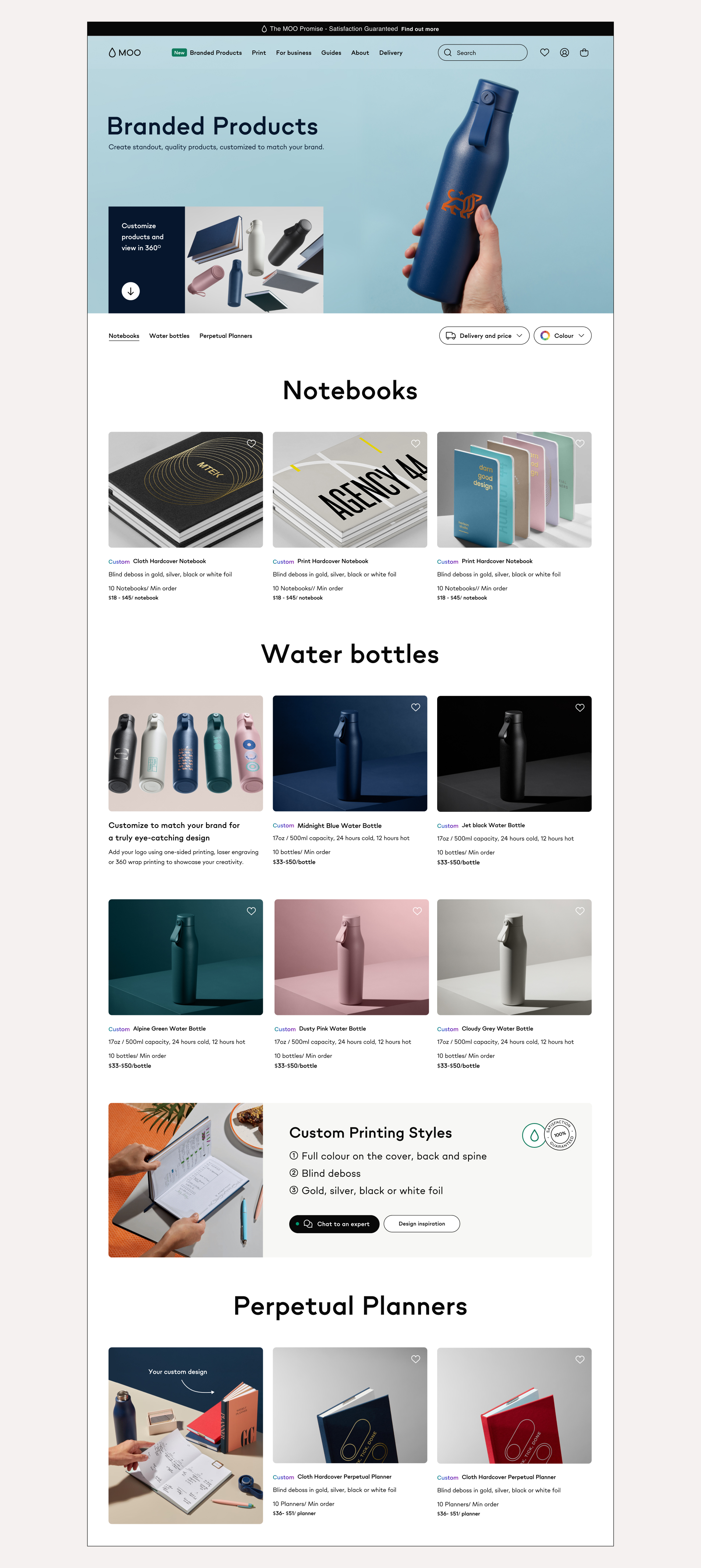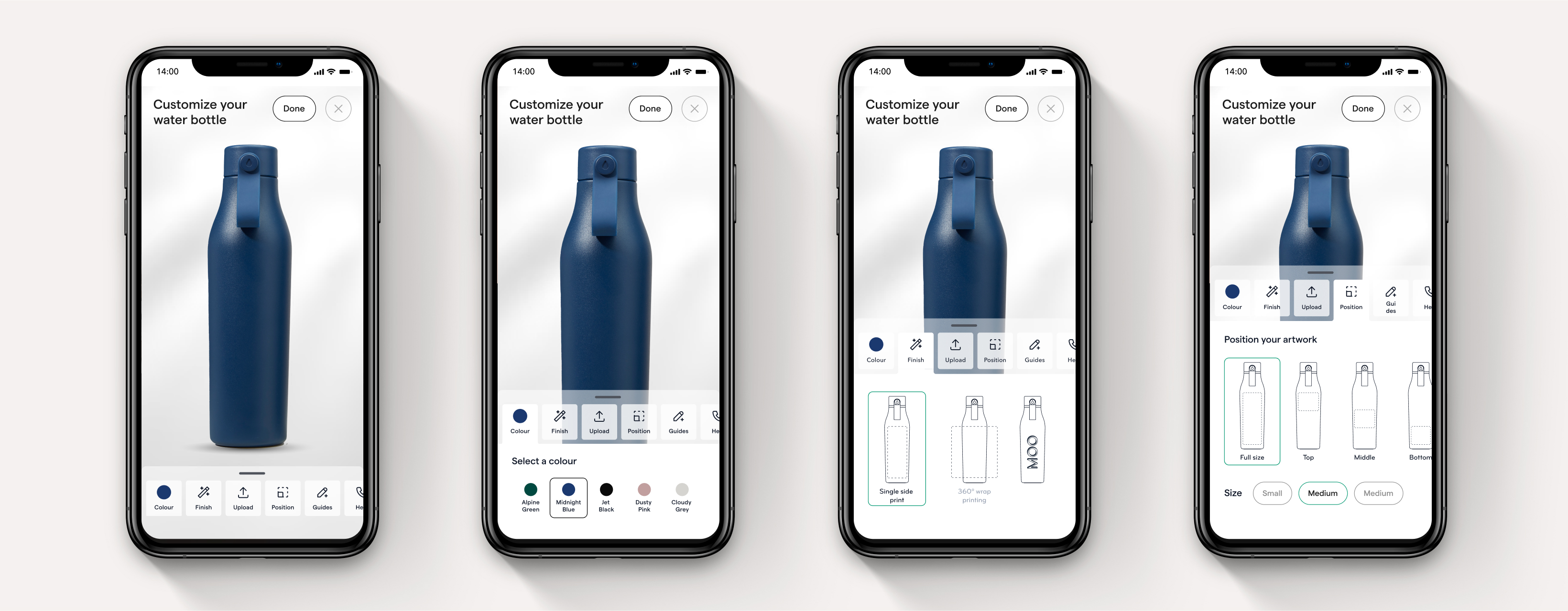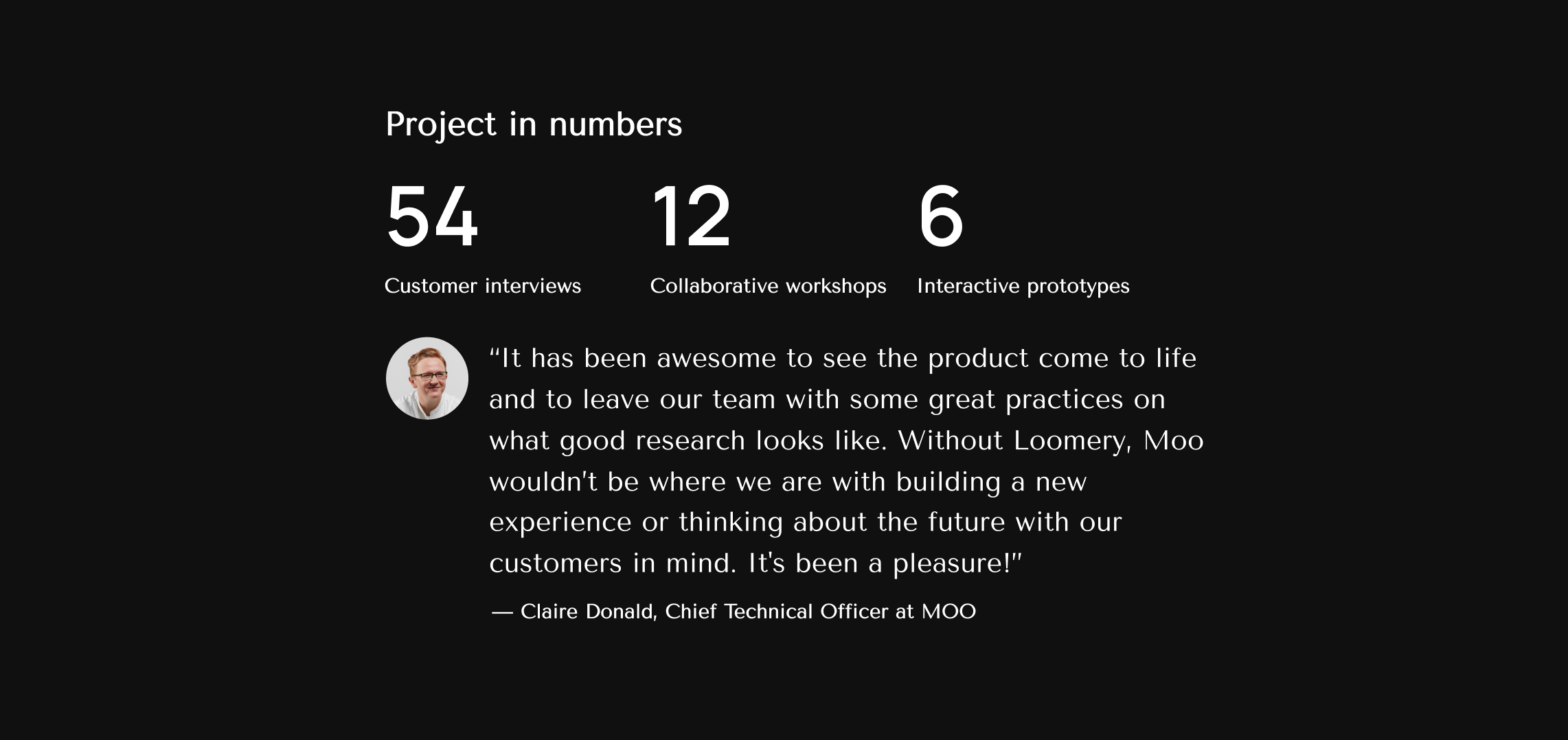
Moo
New platform
Unleashing creative strategies to deliver customer-centric transformative growth
As Design Lead, I partnered with a Product Owner and Product Researcher for a focused 10-week engagement to unlock new growth for MOO. We ran dual-track discovery and delivery sprints, facilitated 12 cross-functional workshops, and engaged over 500 customer touchpoints.
I created a high-fidelity prototype, built a variable-based Design System, and delivered a strategic roadmap. Throughout, I coached MOO’s internal teams, embedding continuous discovery practices and helping them scale their product and design maturity.
I reported directly to MOO’s leadership team across Product, Tech, Creative, and E-commerce.

Challenge
MOO is known for premium print products, but the rise of hybrid work and digital-first buying behaviours challenged their core business. Our brief was to help them diversify into branded merchandise, scale new digital capabilities, and reach a younger, design-conscious US audience. This required a deep shift: from transactional printing to personalised business services. The success of the initiative would be measured by new revenue streams, customer satisfaction, and reduced time-to-order.
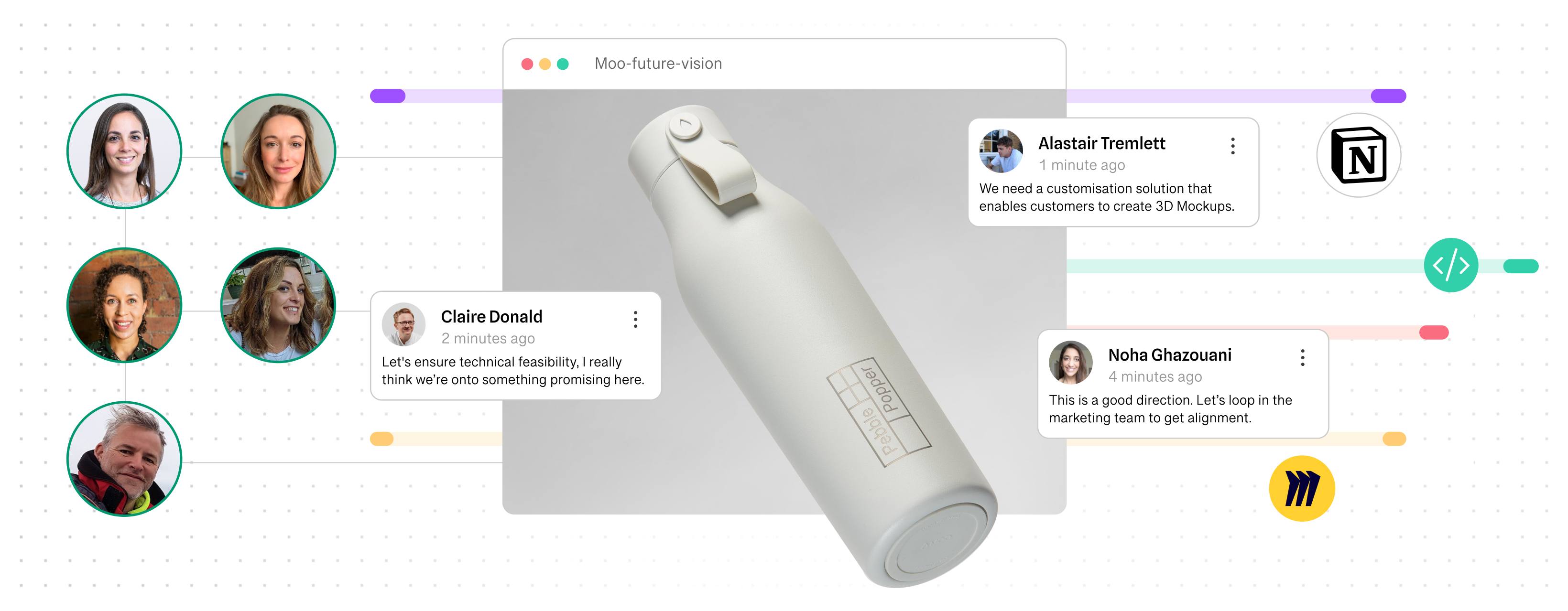
A customer-led strategy to unlock growth
We anchored the strategy in customer-centricity and continuous learning. We introduced weekly research cycles, used opportunity trees to align customer pain points with business OKRs, and focused on testing our riskiest assumptions early. Our approach was transparent by design—running weekly playbacks with C-suite stakeholders and working ‘in the open’ using a shared Notion workspace. We also focused on building capability, ensuring MOO could maintain momentum through new hires and internal coaching.
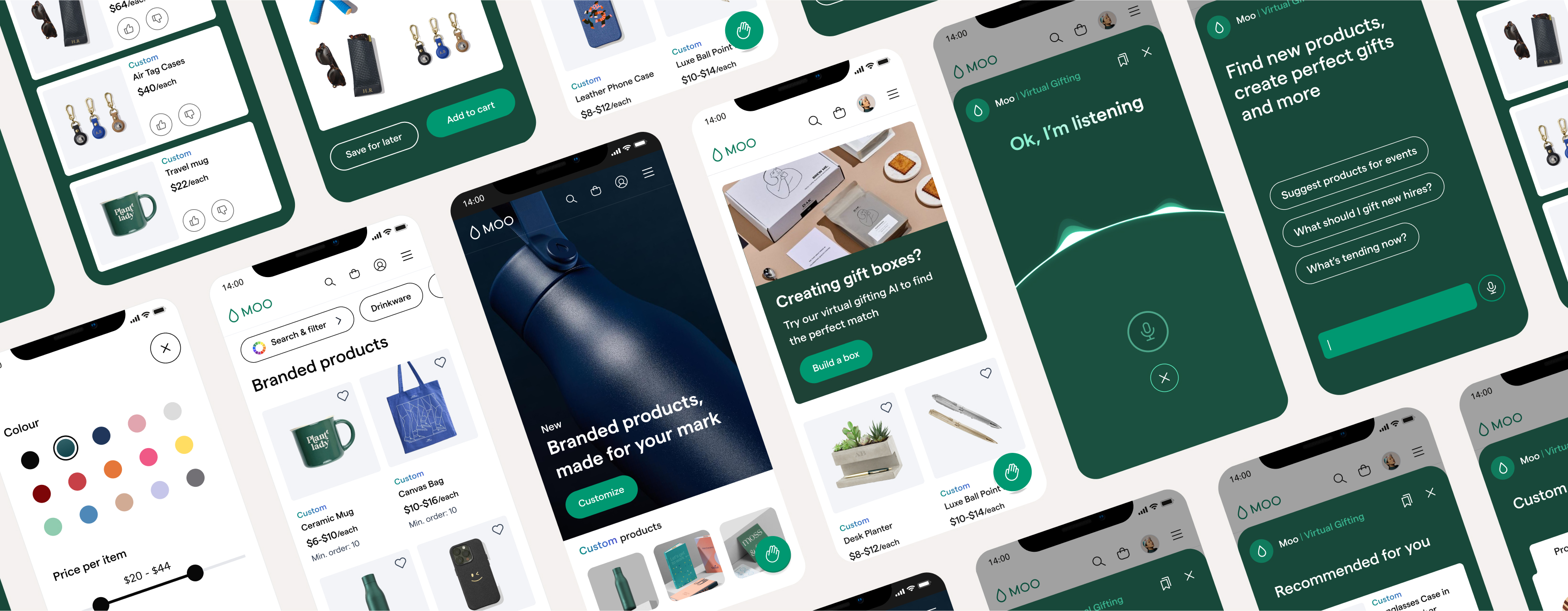
The process was fast, collaborative, and insight-driven:
We interviewed 46 US buyers and mapped internal stakeholder needs. Through affinity mapping and workshops, we generated over 100 ideas and narrowed them down to three we hypothesised would best deliver on the mission. We then prototyped and tested six interactive journeys. From there, we prioritised MVP features tied to measurable outcomes. Regular demos ensured the broader team stayed aligned and engaged throughout.
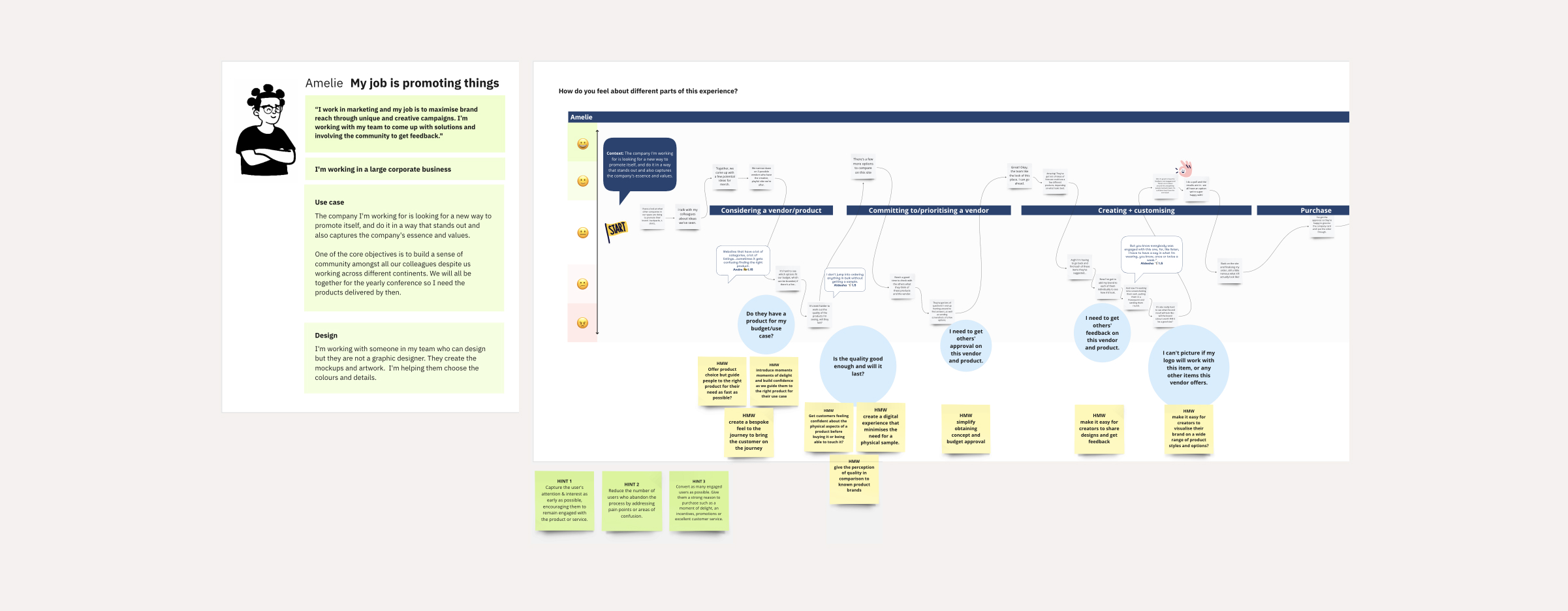
Building the right features for real business needs
We translated insights into concrete features designed to meet both customer and business needs, including an AI-powered bundle recommender with a conversational interface for one-click purchases of curated product bundles, high-fidelity 3D and AR visualisation tools to preview products before ordering, transparent pricing and lead times to reduce checkout friction, streamlined design assistance and reordering through saved workflows, and a token-based design system built to scale responsive design across MOO’s platform.
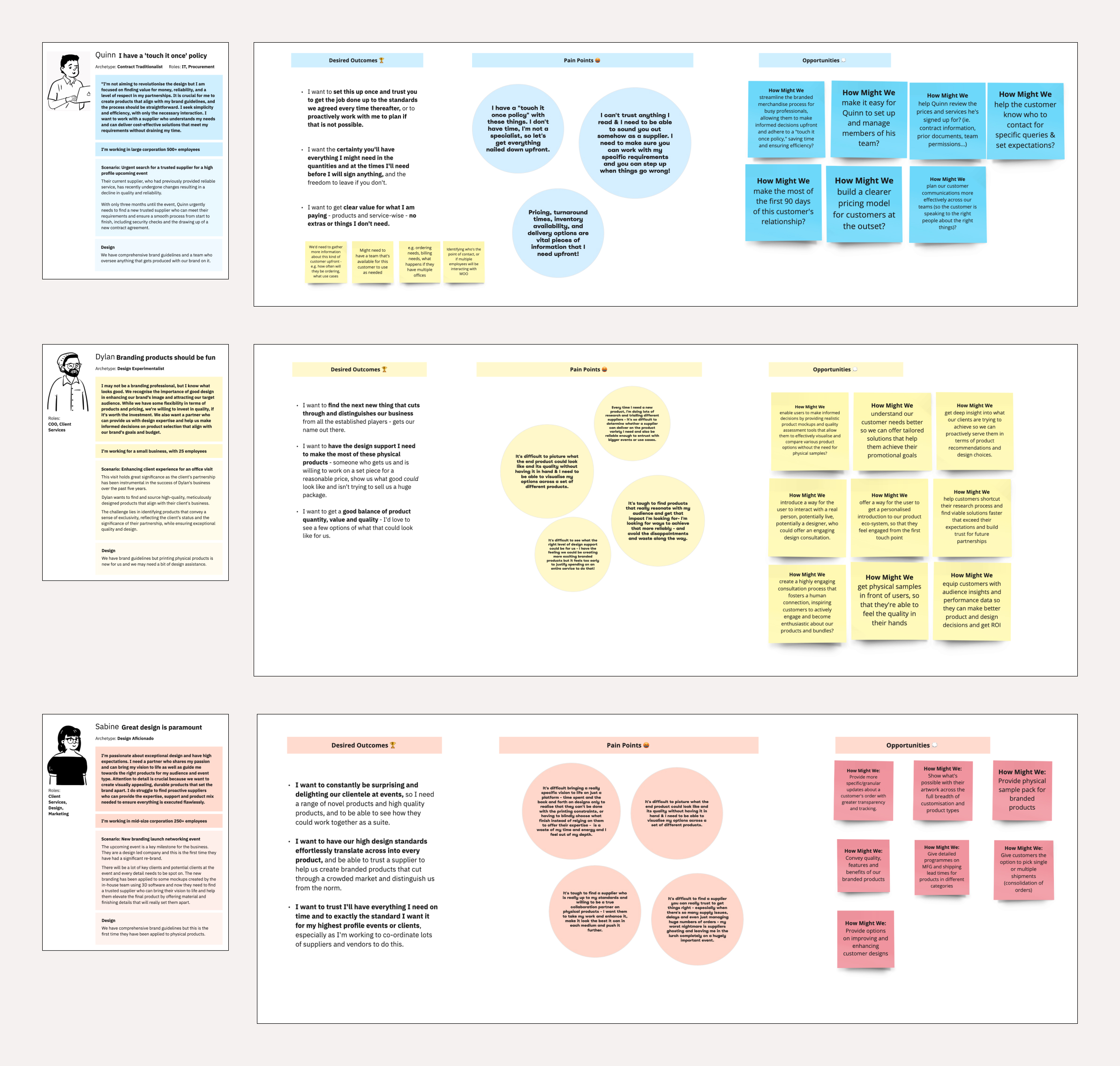
STAKEHOLDER ALIGNMENT
Our approach aligned closely with MOO’s business objectives that highlighted the importance of aquiring a new audience across small, medium and large businesses. Our weekly feedback sessions with the C-suite to incorporate additional insights, address concerns, and adjust the direction as necessary. This open and engaging approach enabled us to create a cohesive set of goals that accelerated progress and streamlined our path forward, maintaining momentum throughout the project.
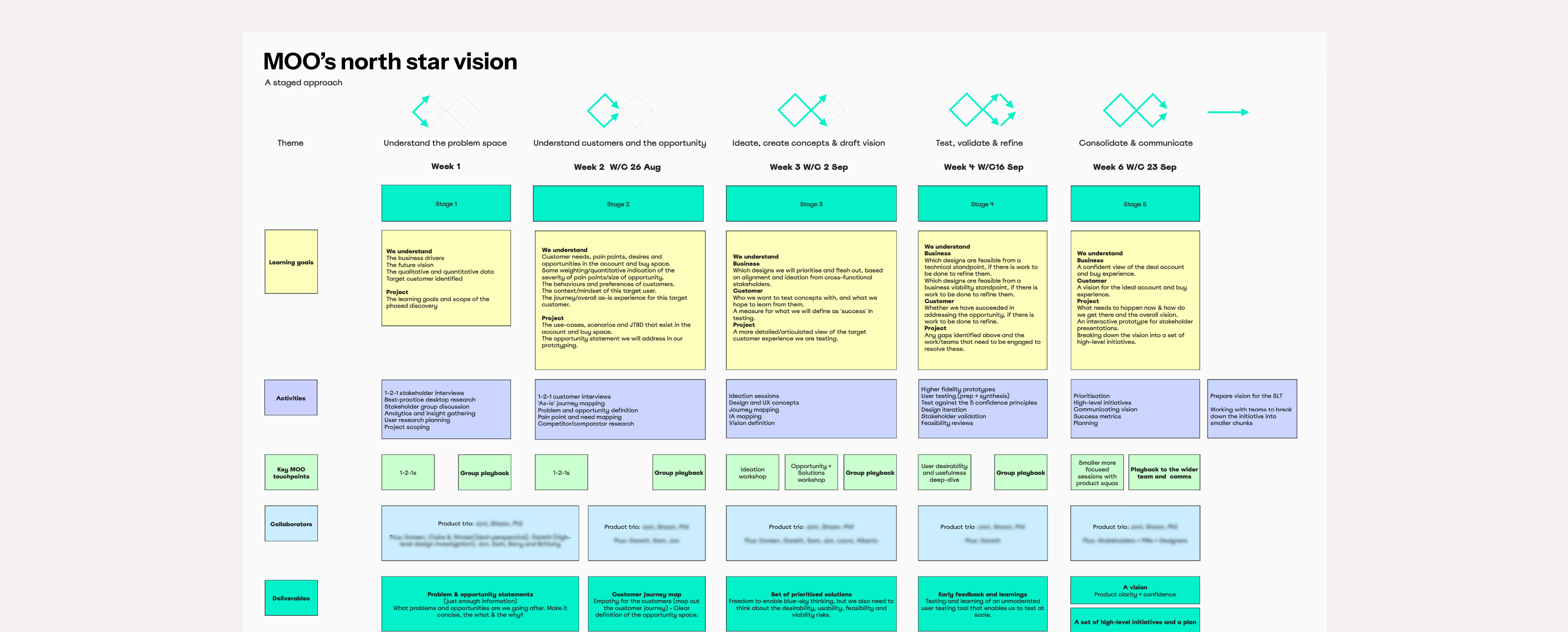
COMMUNICATING OFTEN
At MOO, our approach was characterised by transparency through regular playback sessions with the wider team, collaborative working sessions, and a commitment to working ‘out in the open’ by sharing all our thinking in Notion, every step of the way.
These playback sessions served as a platform for stakeholders to contribute and ensured goal alignment while also providing stakeholders with direct access to customer feedback but also facilitated their active involvement in the process, enabling them to break out of their busy schedules to offer timely feedback on our direction and output, creating a continuous feedback loop. This approach allowed us to break down barriers, and host open discussions, grounded in insight, resulting in better decisions and solutions.
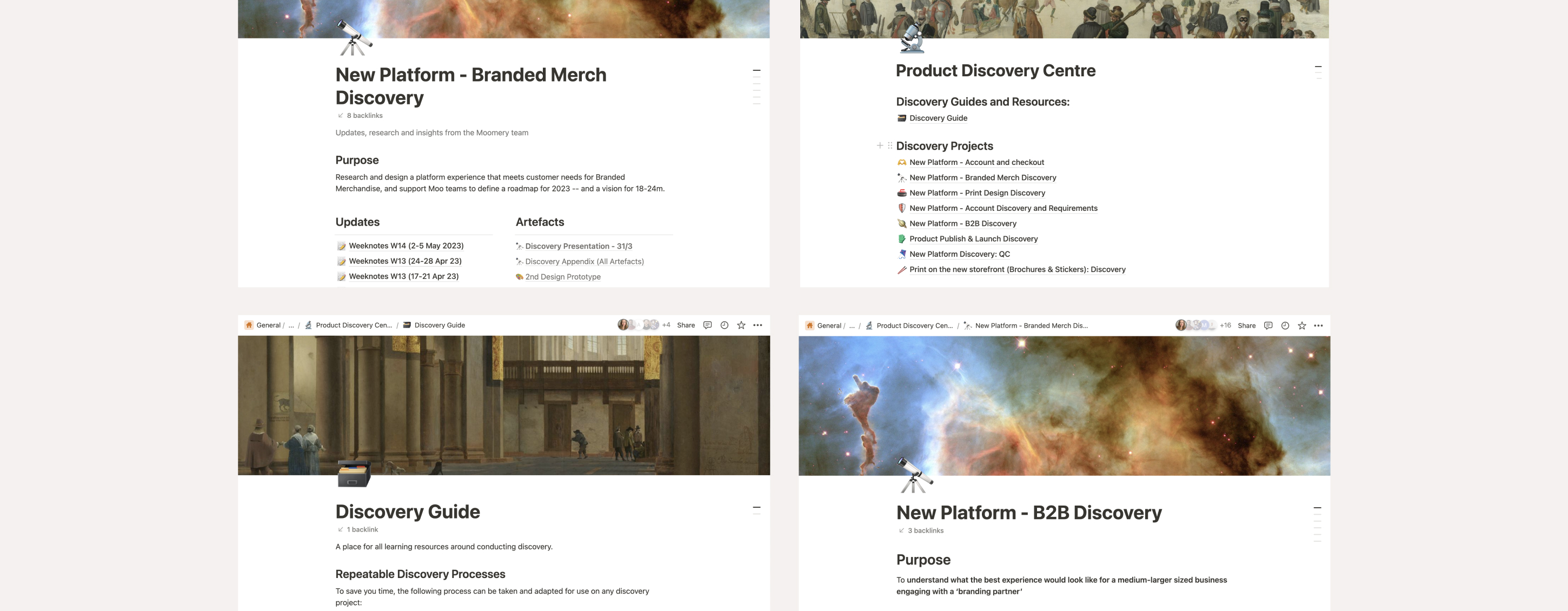
RUNNING EXPERIMENTS
Our research revealed a clear unmet need: customers wanted smarter, faster ways to discover unique, customisable products. Business owners, marketers, and talent managers all struggled to find options that felt fresh, relevant, and aligned with their specific use cases—whether for client gifting, campaign outreach, or employee engagement. They wanted tailored bundle recommendations that adapted to the event type, audience size, and budget.
This insight shaped one of our key experiments: delivering more personalised, context-aware product bundles through AI-driven suggestions.

TESTING HUNCHES
To answer these needs in a fast and intuitive manner we turned to the advancement of AI and the evident appeal of Chat-GPT as told by our testing participants. We created high-fidelity interactive prototypes for testing with our target customers. Through these tests, we uncovered whether a conversational interface could unlock greater customer satisfaction and higher volume, more frequent orders for MOO without the need for a sales assistant during the discovery phase.
Our hunch was successful and we were able to iterate on the product to make it feasible, viable, and even more useful.
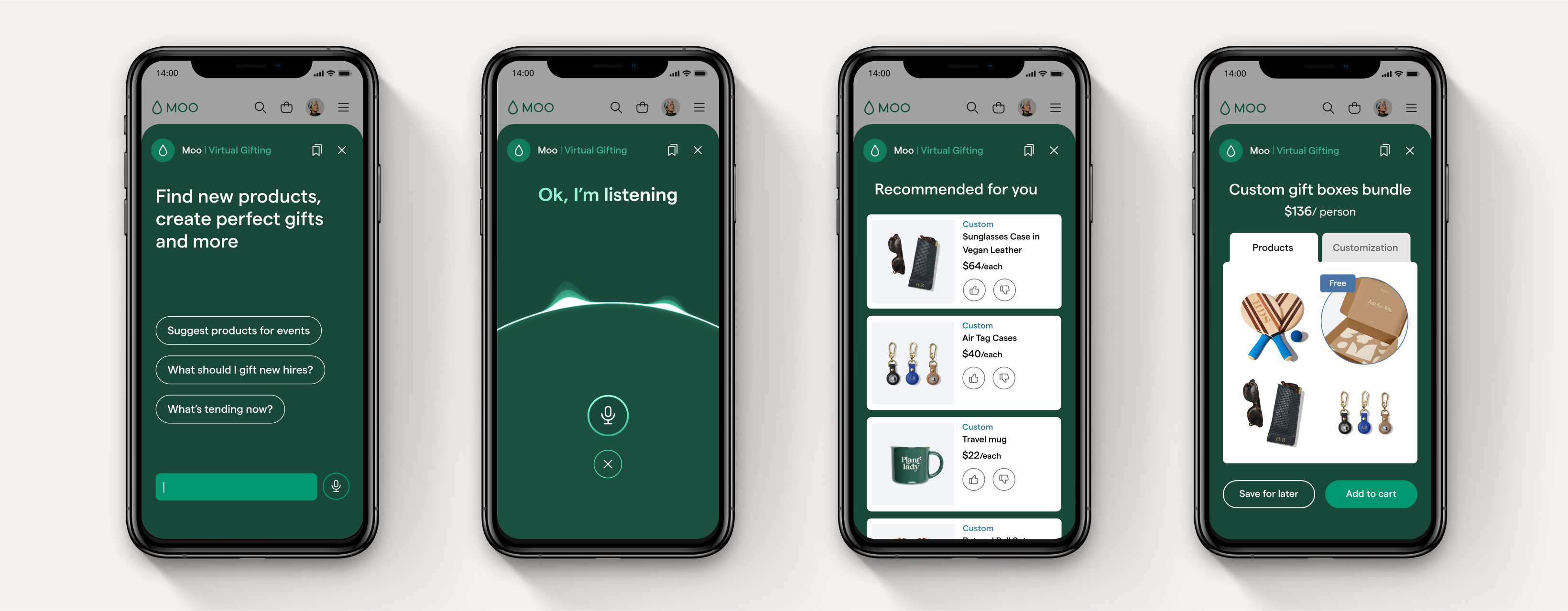
PRIORITY USER STORIES
A critical user need was the ability to visualise the final product without ordering a physical sample. For many, this was the tipping point that determined whether they would engage at all—specifically, uploading a logo and immediately seeing the product from all angles.
Delivering on this need unlocked several others: evaluating design variations, judging aesthetic fit, and assessing perceived quality. Discerning customers also wanted to colour-match across products, ensure brand alignment, and share high-fidelity mockups with collaborators to gain buy-in and secure budget approvals.
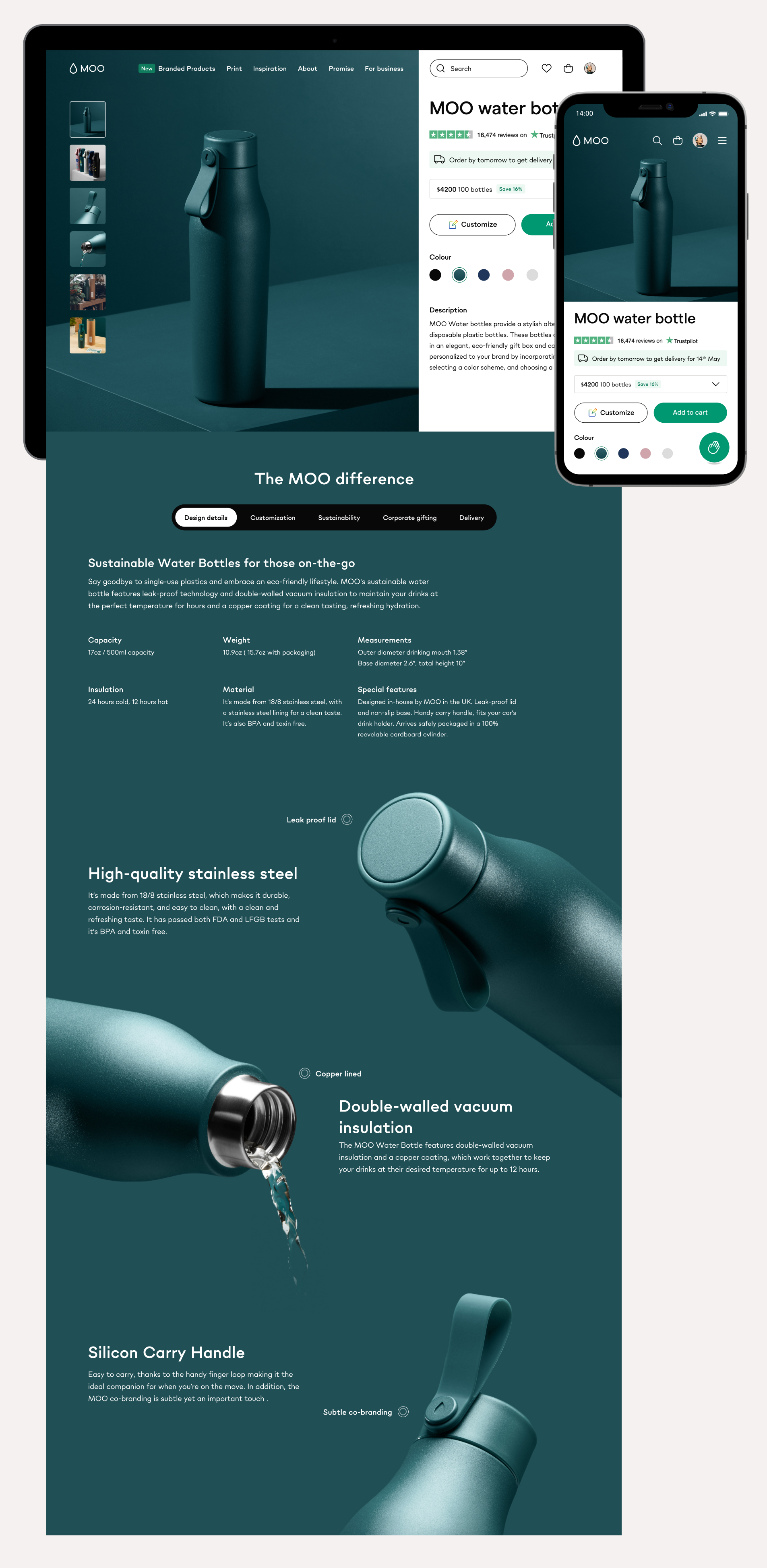
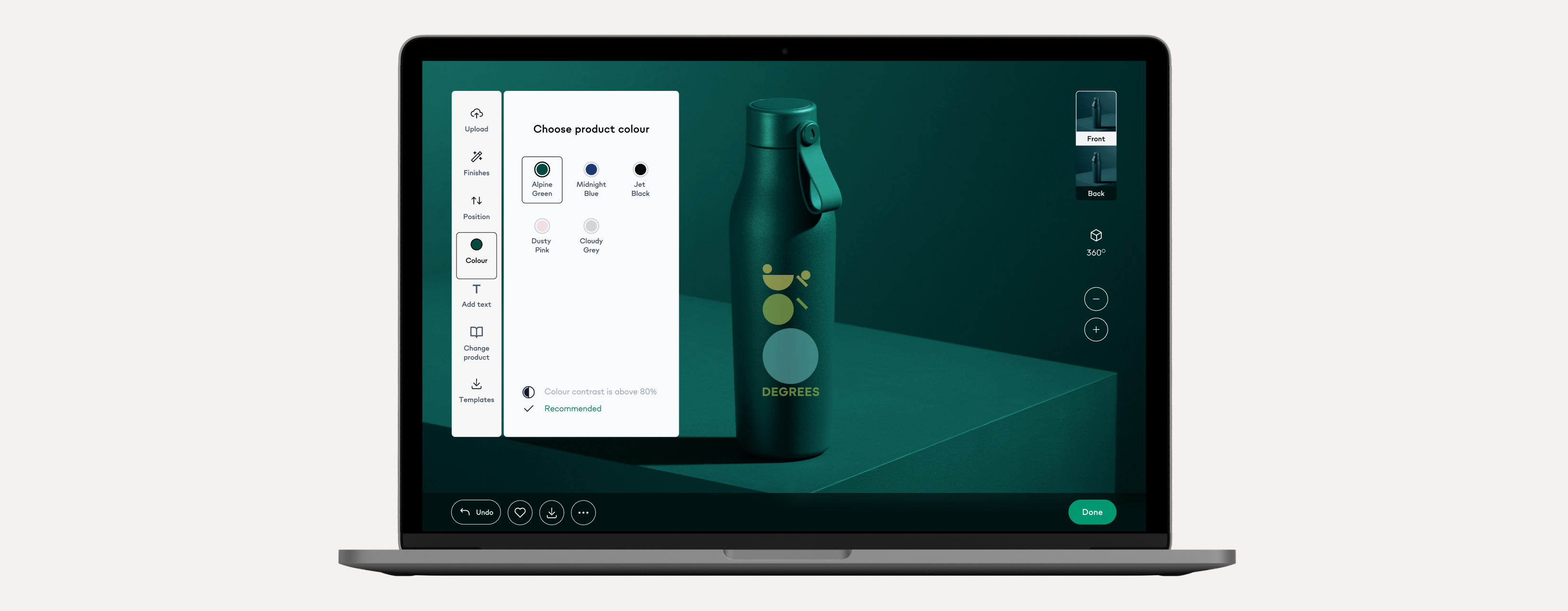
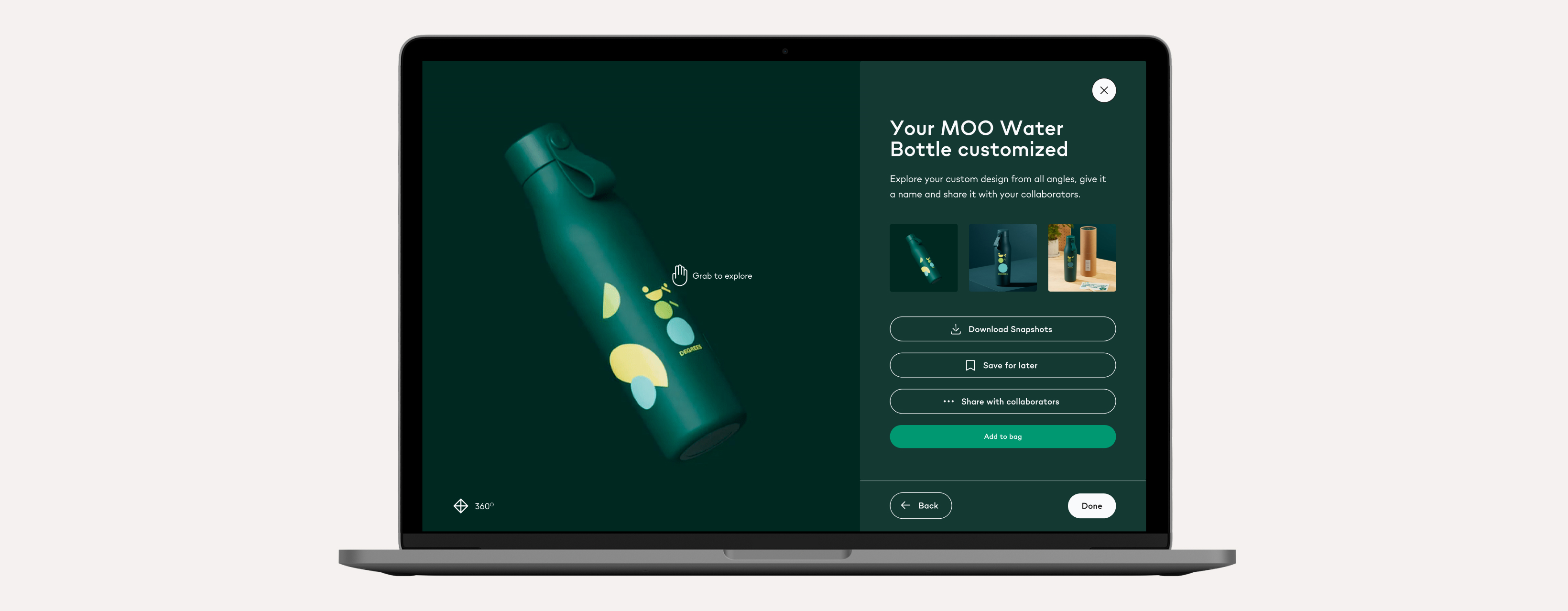
Building the right features for real business needs
We translated insights into concrete features designed to meet real customer and business needs. These included an AI-powered bundle recommender with a conversational interface for one-click purchases of curated product sets, high-fidelity 3D and AR mock-ups to help customers preview products before ordering, and clear, upfront pricing and lead times to reduce checkout friction.
We also introduced streamlined design assistance and reordering through saved workflows, supported by a token-based design system built to scale responsive design across MOO’s platform.
